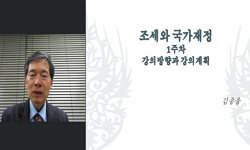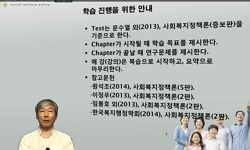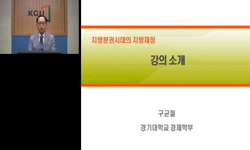정조 20년(1796)부터 간행되기 시작한 『度支田賦考』는 18세기 이후 조선의 각종 토지 결수와 호조의 수입·지출 현황을 정리한 문서이다. 이 책에는 호조에서 관리하고 있는 토지를 연도별·...
http://chineseinput.net/에서 pinyin(병음)방식으로 중국어를 변환할 수 있습니다.
변환된 중국어를 복사하여 사용하시면 됩니다.
- 中文 을 입력하시려면 zhongwen을 입력하시고 space를누르시면됩니다.
- 北京 을 입력하시려면 beijing을 입력하시고 space를 누르시면 됩니다.

『탁지전부고(度支田賦考)』를 통해 본 호조의 재원 파악방식과 재정구조 변화 = A Study on Hojo`s Grasping Financial Resources and the Changes of Fiscal Framework through Takjijeonbugo
한글로보기https://www.riss.kr/link?id=A99702831
- 저자
- 발행기관
- 학술지명
- 권호사항
-
발행연도
2013
-
작성언어
Korean
-
주제어
탁지전부고 ; 호조 ; 정조 ; 국가재정 ; 실상납 ; 가입 ; Takjijeonboogo ; Hojo ; jeongjo ; National finance ; Silsangnap ; Gaip
-
KDC
911
-
등재정보
KCI등재
-
자료형태
학술저널
-
수록면
515-558(44쪽)
- 제공처
-
0
상세조회 -
0
다운로드
부가정보
국문 초록 (Abstract)
정조 20년(1796)부터 간행되기 시작한 『度支田賦考』는 18세기 이후 조선의 각종 토지 결수와 호조의 수입·지출 현황을 정리한 문서이다. 이 책에는 호조에서 관리하고 있는 토지를 연도별·지역별·지목별로 그 수량을 기록하고 있으며, 수입·지출 현황에 대해서도 연도별·지역별·세목별·물종별로 구분하여 세세하게 기록하고 있다. 『度支田賦考』는 18세기 왕조정부의 재정개혁 과정에서 간행되었다. 18세기 왕조정부의 재정개혁 방향에서 가장 중요한 흐름은 각종 부세의 地稅化였다. 지세화가 진행된 후 재정확보를 위해서는 과세 가능한 토지를 확보하는 것이 무엇보다 중요했다. 하지만 경자양전 이후 도단위 양전이 비용부담과 반대여론에 의해 시행되지 못하였고, 결국 기존에 파악된 토지의 활용도를 극대화할 필요가 있었다. 따라서 출세실결 감소를 막고 기존 면세지에 대한 관리·감독을 강화하기 위한 시대적 과제 속에서 간행된 것이 바로 『度支田賦考』이다. 『度支田賦考』는 크게 사례·田摠·賦摠·附編으로 구분되는데 주요 재정수치를 기록하고 있는 것은 전총과 부총이다. 전총은 원장부·유래진잡탈·면세·급재·출세실결 등 5가지 항목으로 구성되어 있으며, 부총은 각양외감·실상납·가입·용하 등 4가지 항목으로 구성되었다. 전총·부총의 기재방식을 통해 『度支田賦考』가 왕조재정의 수출입을 규정하기 위함이 아니라 국가적인 수지구조를 파악하기위해 작성되었다는 것을 알 수 있다. 『度支田賦考』에는 기관이나 지역의 세부적인 명목별 토지결수나 부세상납 상황이 기재되어 있지 않고 대분류를 통해 합계만을 기록하였다. 주요 재정수치를 살펴보면, 19세기 전반까지 원장부는 큰 폭은 변화 없이 유지되었으나 유래진잡탈·면세·급재 등 과세대상에서 제외되는 토지가 증가하면서 출세실결이 감소하였고, 이에 따라 부세수입도 함께 줄어들었다. 호조는 부세수입 감소에 대응하기 위해 중앙과 지방기관으로부터 재정을 지원받는 加入을 확대하였고, 이는 19세기 조선왕조의 재정운영에 큰 영향을 주었다.
다국어 초록 (Multilingual Abstract)
Takjijeonbugo is the record about Hojo`s revenue and expenditure, and numbers of extent of all kinds of land in Joseon after the 18th century. It was first published in 1796, the year Jeongjo 20th. In this book, the quantity of land managed by Hojo is...
Takjijeonbugo is the record about Hojo`s revenue and expenditure, and numbers of extent of all kinds of land in Joseon after the 18th century. It was first published in 1796, the year Jeongjo 20th. In this book, the quantity of land managed by Hojo is recorded by year, region, and category. Also, income and expenditure is recorded by year, regions, details, and items. Takjijeonbugo was published in the process of the dynasty`s financial reform in the 18th century. The gist of this reformation was all kinds of tax imposition`s ‘Jisehwa’(land value tax system). After Jisehwa was enforced, it became important to secure taxable land to procure the consolidate stable finance. However, after the land survey in 1720, the survey based on unit of do (道) was not able to take effect due to the budern of expenses and the opposition. Consequently the usage of the land figured in the past needed to be maximized. In this context, Takjijeonbugo was published to prevent the decrease of Chulsesilgyeol, and tighten the management over existing tax free lands. Takjijeonbugo has four categories: Sarye, Jeonchong, Buchong, and Bupyeon. Jeonchong and Buchong records major numerical values in finance. Jeonchong is made of five categories: Wonjangbu, Yuraejinjabtal, Myeonse, Geupjae, and Chulsesilgyeol. Buchong is made of four categories: Gakyangoegam, Silsangnap, Gaip, and Yongha. Judging from the recording mode of Jeongchong and Buchong, Takjijeonbugo is written to figure out the income and expenditure on a national level, not to regulate the income and expense of the royal family`s finance. Thus, in Takjijeonbugo, detailed quantity of lands and tax payment of individual institutions/regions are not recorded. Only its sum of big categories are written. To take a look at the main financial numbers, Wonjangbu has been maintained stationarily till the first half of 19th century while tax free lands such as Yuraejinjabtal, Myeonse and Geupjae increased. Accordingly, Chulsesilgyeol has decreased, and consequently total tax revenue has decreased as well. To cope with it, Hojo expanded Gaip (加入) which had supports from the central and local governments, and this lead to the huge influence on Chosun dynasty`s financial management in the 19th century.
동일학술지(권/호) 다른 논문
-
특집 : 평화와 통일의 사건사; 민족어의 통합 통일과 <겨레말큰사전> 남북 공동 편찬
- 고려대학교 민족문화연구원
- 홍종선 ( Jong Seon Hong )
- 2013
- KCI등재
-
특집 : 동아시아 전통문화 속의 죽음과 사후관; 한중(韓中)저승 체험담 속 저승 묘사와 사상적 경향 비교
- 고려대학교 민족문화연구원
- 김정숙 ( Jeong Suk Kim )
- 2013
- KCI등재
-
황종희(黃宗羲)의 고문론(古文論) -지정(至情)과 궁경(窮經)을 중심으로-
- 고려대학교 민족문화연구원
- 윤상수 ( Sang Soo Youn )
- 2013
- KCI등재
-
특집 : 평화와 통일의 사건사; 대북지원의 정치경제와 인도주의의 딜레마
- 고려대학교 민족문화연구원
- 조대엽 ( Dae Yop Cho )
- 2013
- KCI등재




 KCI
KCI KISS
KISS






